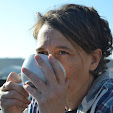10 ways to tackle coronavocab: #4 new compounds & contexts
Somewhere in-between the new coinages we saw in my first post (coronacoaster, isobaking) and the
increased use of existing terms (isolation,
hand sanitizer), new compounds (social
distancing, social bubbles) and new uses of existing words have emerged (e.g.
shielding to describe how high-risk people
need to self-isolate to protect themselves from the virus). And of course, as the ever-changing siutation develops, new terms are being created all the time to describe the new normal ... oops, that's another trending term I forgot to include!
A lot of these overlap with the previous posts, so you could easily mix and match items, for example, social distancing naturally fits in with some of the phrases from post #2 (keep your distance, stay 2 metres apart, etc.). Remember to choose just a handful of terms – it could even be just one for a short activity – and make sure to explore how the terms are used in context. Think about collocations (practise/maintain/ensure/observe social distancing), prepositions (in/during lockdown) and variations (a socially distanced coffee/walk)
A lot of these overlap with the previous posts, so you could easily mix and match items, for example, social distancing naturally fits in with some of the phrases from post #2 (keep your distance, stay 2 metres apart, etc.). Remember to choose just a handful of terms – it could even be just one for a short activity – and make sure to explore how the terms are used in context. Think about collocations (practise/maintain/ensure/observe social distancing), prepositions (in/during lockdown) and variations (a socially distanced coffee/walk)
Some examples in context:
We
are maintaining social distancing by
making wider aisles.
People
are not social distancing and are
going out and breaking rules.
There's
only one thing more exciting than a
socially distanced walk with a friend this weekend -- a socially distanced
picnic.
With
children at home, life in lockdown
can be a challenge.
New
Zealand has already allowed people to expand their social bubbles to contact with close family outside their own
households.
Is it OK to bubble with another family this summer?
The
family is supposed to be shielding
because her son suffers from severe asthma.
All
of the staff went into self-isolation
at home when they developed symptoms.
Staff
who came into close contact with the
woman have been tested.
The
report says that testing and tracing
efforts should reach 70% of all contacts
within two days.
Even
in Singapore, only 20%
of the population have the government's contact
tracing app installed.
Restrictions
are expected to continue in Mumbai, a major virus hot spot.
Australia
and New Zealand are discussing the possibility of opening up borders to each
other, creating a travel corridor between
the two countries.
Activities:
- Although it’s quickly been adopted as the standard term, social distancing caused some disagreement early on, with the WHO arguing for the term physical distancing. This could make an interesting short discussion about which term is better and why.
- What do students think about contact tracing apps? Lots of scope for discussion with vocab feeding in (come into close contact with sb, go into self-isolation, proximity, etc.)
- What about creating imaginary social bubbles? Who would you bubble with if you could choose absolutely anyone?!
- Get students to put together posters/presentations/videos explaining the different terms, for example, what social distancing or contact tracing is, why we need to do it, tips and warnings, etc.
- There are lots of memes around about how to judge the appropriate distance between people – there are some fun illustrations in this CNN article and a couple of quick mock-ups of my own below. Or here's a short BBC video. Get students to come up with their own ideas in terms of the things they're familiar with around them and using whatever distance is recommended in their own country. And of course, don't forget to get them to explain their ideas using all the relevant language.
Labels: compounds, coronavirus, coronavocab, vocabulary





0 Comments:
Post a Comment
<< Home